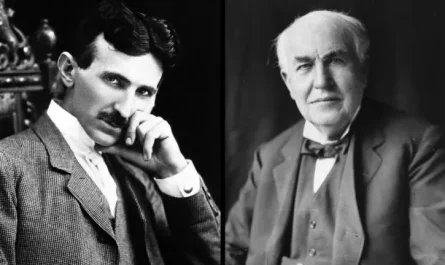Hey, science enthusiasts and curious minds! Let’s take a thrilling dive into the quantum world through the lens of three absolute legends—Paul Dirac, Werner Heisenberg, and Erwin Schrödinger. These guys didn’t just nudge physics forward; they flipped it upside down, rewriting the rules of reality itself. Buckle up, because we’re about to explore how their mind-bending ideas shaped quantum mechanics and changed the way we see the universe.
Paul Dirac: The Antimatter Visionary
Picture this: it’s the 1920s, and quantum physics is a wild, uncharted frontier. Enter Paul Dirac, a quiet genius with a knack for seeing what others couldn’t. Dirac cooked up the Dirac equation, a mathematical masterpiece that described how particles like electrons behave when you mix quantum mechanics with Einstein’s special relativity. Sounds heavy, right? It was! This equation didn’t just explain electrons—it predicted something bonkers: antimatter. That’s right, Dirac’s work suggested every particle has a mirror-image twin with opposite charge, a prediction so wild it blew minds until antimatter was actually discovered a few years later.
Why does this matter? Dirac’s equation was like a cosmic bridge, tying quantum mechanics to relativity and giving us a deeper peek into the subatomic world. It’s the kind of thing that makes particle accelerators and sci-fi dreams possible. Talk about leaving a legacy!

Werner Heisenberg: The Uncertainty Rockstar
Next up, Werner Heisenberg, the guy who made us realize the universe plays by some seriously weird rules. His big claim to fame? The uncertainty principle. In plain English, Heisenberg showed that you can’t pin down certain pairs of properties—like a particle’s position and momentum—at the same time with perfect accuracy. The more you know about one, the fuzzier the other gets. It’s like trying to catch a soap bubble without it popping.
This wasn’t just a quirky math problem; it shook the foundations of how we understand reality. Before Heisenberg, we thought we could measure everything precisely, like clockwork. After? We had to accept that the quantum world is inherently uncertain, sparking debates about the nature of existence that still keep philosophers up at night. Heisenberg didn’t just give us equations—he gave us a whole new way to wrestle with the universe’s mysteries.
Erwin Schrödinger: The Wave Whisperer
And then there’s Erwin Schrödinger, the guy who brought waves to the quantum party. His wave equation is like the heartbeat of quantum mechanics, describing how a particle’s quantum state evolves over time. Think of it as a cosmic recipe for tracking where a particle might be and what it’s doing, all wrapped up in something called a wave function. This wave function is like a probability map, telling us the odds of finding a particle in a certain spot or with a certain speed.
Schrödinger’s approach, known as wave mechanics, was a game-changer. It gave us a visual, intuitive way to think about quantum behavior, standing shoulder-to-shoulder with Heisenberg’s more abstract matrix mechanics. Plus, Schrödinger’s work made quantum mechanics accessible to a wider crowd, paving the way for everything from modern chemistry to quantum computing. Oh, and let’s not forget his famous thought experiment with a certain cat—yep, Schrödinger’s cat is his quirky gift to pop culture!
Why They’re Heroes
Dirac, Heisenberg, and Schrödinger weren’t just crunching numbers in dusty labs—they were rewriting the rulebook of the universe. Their work challenged everything we thought we knew about physics, trading the predictable world of Newton for a realm of probabilities, waves, and antimatter. From the tech in your smartphone to the mysteries of black holes, their ideas ripple through our lives today. They showed us that the microscopic world is weirder and wilder than we ever imagined, and that’s what makes their story so darn exciting.
So, next time you’re pondering the mysteries of the cosmos, tip your hat to these quantum pioneers. They didn’t just solve equations—they opened our eyes to a universe that’s equal parts baffling and beautiful.


